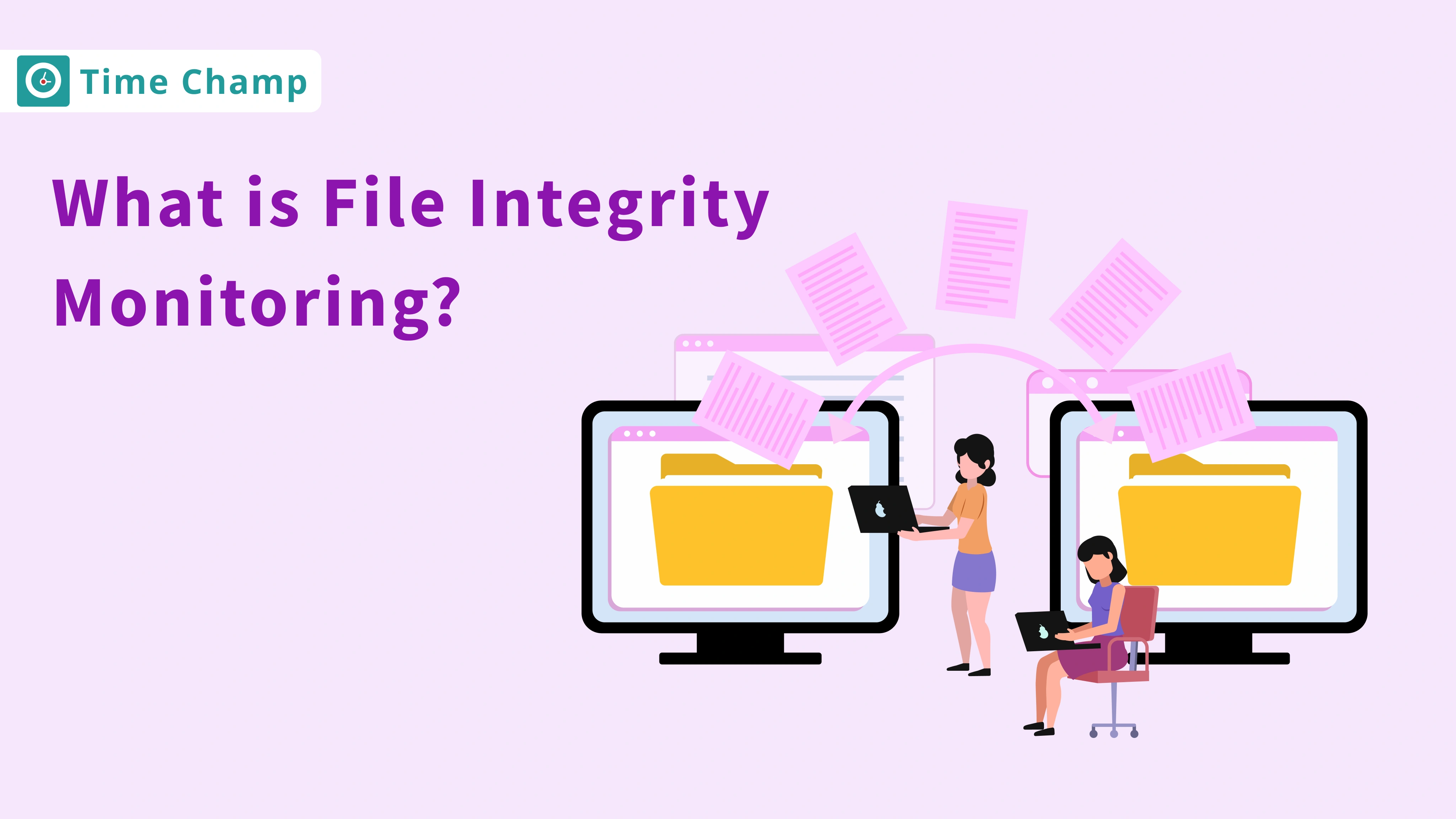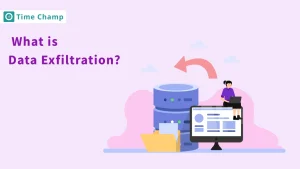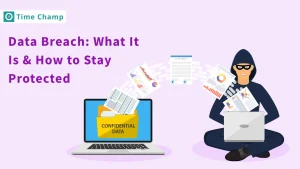File integrity monitoring is an aspect most businesses tend to ignore, but it’s really important. I will tell you why.
Every organization stores data in some sort of file format, right? Be it Word, Excel, or even a PPT containing the most important details like, project plan, budget, client details, contract periods, and more, these files of yours are at risk without proper protection . File integrity monitoring keeps your files safe by tracking changes in real time and alerting you to any unauthorized modifications.
Keep reading, I am going to tell you more about its benefits, working, and best practices.
What is File Integrity Monitoring?
File Integrity Monitoring (FIM) is a security process that continuously checks the state of your critical files and system configurations for any unauthorized changes. It works by creating a secure baseline of file attributes, such as size, permissions, and cryptographic hashes, and then comparing that baseline to the current state of the files.
If any changes are found, FIM quickly notifies administrators, helping to spot threats like malware, insider tampering, or data loss quickly. This approach keeps your data safe and helps meet industry rules by tracking changes and providing records for security checks.
Do You Know?
The file integrity monitoring market was valued at around USD 962.1 million in 2024 and is expected to grow at a steady rate of 14.6% annually through 2030.
Why is it Important to Monitor File Integrity?
As said earlier, implementing file integrity monitoring is important. Here are a few reasons why.
1. Proactive Threat Detection
FIM keeps track of all the changes made to critical system files and alerts you when unauthorized modifications are attempted. This real-time detection addresses and helps identify potential threats as malware, insider tampering, or data corruption before they happen.
2. Regulatory Compliance
There are many industries that must adhere to regulations such as PCI DSS, HIPAA, and GDPR that require strong security practices. FIM provides organizations with detailed logs of file access and modifications, helping them to meet these compliance requirements.
3. Enhances System Visibility
FIM provides you with an in-depth view of the system activities by monitoring file changes in real time. Increased visibility allows your IT team to spot and address suspicious behavior before critical files get impacted.
4. Automates Monitoring
You can configure FIM to automatically monitor and send alerts specific file changes, by doing this you can reduce the need for manual supervision. Automating things helps you enhance your security operations and ensure timely responses for any issues.
5. Reduction of False Positives
A well-tuned FIM system differentiates between legitimate file changes and threats, greatly reducing false positive alarms. This accuracy helps your security teams concentrate more on genuine threats instead of getting tensed for unnecessary alerts.
File integrity monitoring is an essential part of protecting sensitive data, compliance, adherence, and overall system security. It allows your organization to respond quickly to potential risks that threaten your information assets by quickly identifying unauthorized changes.
How Does File Integrity Monitoring Work?
If you don’t already know how FIM works, let me explain:
1. Creating a File Integrity Policy: First, the organization needs to determine guidelines detailing which files need to be monitored, what will be considered unauthorized changes, and establish protocols for managing breaches. This policy gives your entire organization the same expectations.
2. Establishing a Baseline: Taking a snapshot of critical files in their original state and recording details like size, last modified date, and cryptographic hashes. This serves as a reference to spot any unexpected changes in the future.
3. Using Cryptographic Hash Signature: Assigning unique hash values (e.g., ADI-369) to every single file. Any change, no matter how small it is, produces a new hash, allowing you to spot tampering or unauthorized edits easily.
4. Monitoring, Analyzing, and Verifying File Integrity: Continuously comparing the current state of each file with the baseline. Automated tools also help in filtering out valid changes, such as system updates, while flagging suspicious behaviors for closer inspection.
5. Instant Notifications: Setting up alerts to trigger when a file alteration deviates from the baseline. Instant alerts help teams respond quickly, minimizing the chances for attackers to exploit vulnerabilities.
6. Ensuring compliance and reporting: Keeping thorough records of all detected changes and actions taken. These records make regulatory audits easier and showcase the organization’s commitment to maintaining security standards.
Best Practices for Monitoring File Integrity
Just knowing about FIM won’t be enough if you want to implement it in your organization, you need to know about the best practices in order to make the process best for you.
1. Identify and Prioritize Critical Files
You need to focus on the data that’s most essential to your operations, such as system configuration files or sensitive databases. By pinpointing all these assets, you can focus your monitoring efforts where they’ll have the greatest impact.
2. Use Real-Time Monitoring Whenever Possible
Implement solutions like Time Champ that track changes the moment they occur. This immediate detection helps you to respond quickly, reducing the likelihood of damage or data loss.
3. Validate and Classify Changes
Define clear rules to separate routine file updates from suspicious modifications. Categorizing changes streamlines your incident response and cuts down on unnecessary alerts.
4. Set Up Smart Alerts
Configure notifications that trigger only for high-risk modifications. Targeted alerts prevent overload and help your team focus on the most urgent threats.
5. Automate Incident Response
Connect your File Integrity Monitoring tools with security orchestration solutions to handle threats automatically. This rapid, automated action limits any potential harm and lightens the workload on your security team.
6. Maintain Detailed Logs and Reports
Keep thorough records of every detected file change and the actions taken. Comprehensive logs simplify audits, assist in investigations, and support regulatory compliance.
7. Regularly Review and Fine-Tune FIM Policies
Assess and adjust your monitoring rules and thresholds in response to emerging threats and organizational changes. Frequent reviews help ensure your FIM strategy stays effective.
8. Combine FIM with Other Security Measures
Use FIM along with antivirus software, firewalls, and intrusion detection systems. A multi-layered defense provides stronger protection against evolving cyberattacks.
9. Educate and Train Your Team
Offer ongoing training so staff understand how FIM works and why it matters. Well-informed employees are the key players in identifying risks and maintaining security best practices.
Ensure Your File Security with Time Champ
Time Champ is an employee productivity and time tracking software with file integrity monitoring capabilities.
Data security is a top priority for any organization, and Time Champ ensures your files stay protected at every level. With advanced security measures in place, you can prevent unauthorized access, track file activity, and safeguard sensitive information with ease. Here are some features of Time Champ that help you secure your files:
Access Control & Permissions: Time Champ allows you to limit file access to only authorized users and even alerts you when any unauthorized logins try to tamper with it so that you can step in early to reduce the risk of data breaches.
Activity Logs & Audit Trails: It also provides you with a complete record of the people who have accessed, modified, or shared a file, ensuring transparency and accountability.
Tamper Detection Alerts: You can receive real-time notifications if anyone suspiciously changes any file or attempts unauthorized logins.
Automated Backups: Time Champ provides automated cloud backups for you to keep your data safe so you never lose important files due to accidental deletions or cyber threats.
End-to-End Encryption: Protects your data with strong encryption, making sure your files remain secure even during transfers.
With Time Champ, you get complete control over your data, ensuring complete security, compliance, and peace of mind. Stay protected and keep your files safe effortlessly.
Conclusion
File integrity monitoring is really necessary if you don’t want to end up losing everything, it’s a very practical approach in catching unauthorized file changes before they become serious issues. It gives you full visibility into file activities, helps your teams react on time to potential threats, and supports compliance with industry standards.
In short, investing in FIM is a smart way to secure your information and maintain a smooth, reliable operation.
FAQs
You can see value in FIM regardless of your industry, but it’s especially beneficial in sectors that handle sensitive data, like healthcare, finance, government, and retail. If your organization deals with confidential information or regulated data, FIM can help you maintain integrity and avoid compliance issues.
Absolutely, modern FIM solutions are built to extend their monitoring capabilities to cloud environments. You can track file changes across on-premise and cloud storage, ensuring consistency in your security posture.
You must update your baseline regularly to ensure your FIM system reflects your current environment. The frequency of updates depends on how dynamic your file changes are, more frequent changes require regular updates.
Yes, FIM is designed to work alongside other security solutions like SIEM, intrusion detection systems, and antivirus software. By integrating these tools, you gain a comprehensive view of your security landscape.
When selecting a FIM solution, you should evaluate its ease of integration, scalability, reporting capabilities, and level of automation. Select a tool that minimizes false positives and fits seamlessly into your existing IT infrastructure.
Yes, you can keep track of file integrity regardless of where your team is working from. By ensuring consistent monitoring, FIM helps you maintain data security across distributed work environments.







